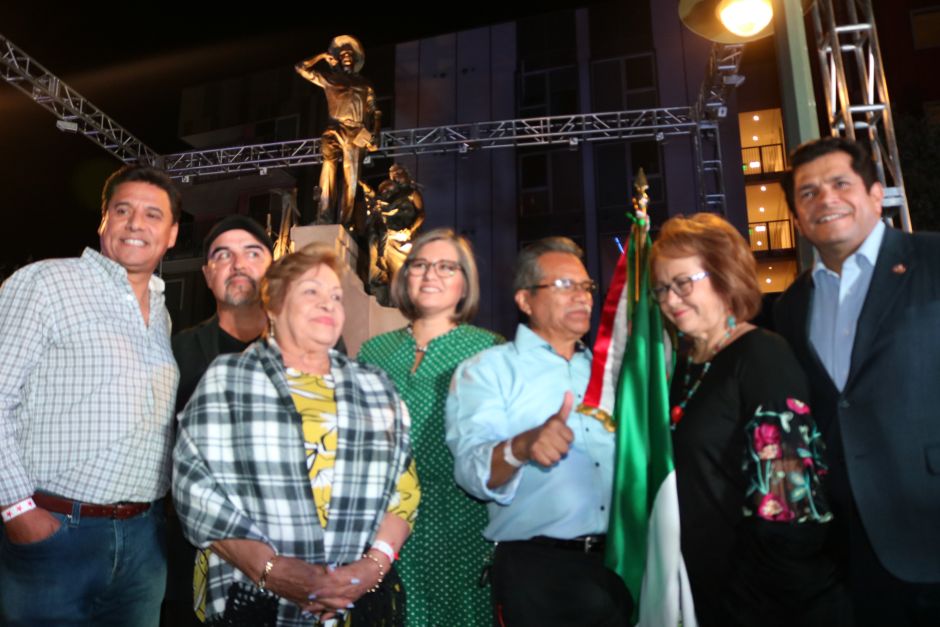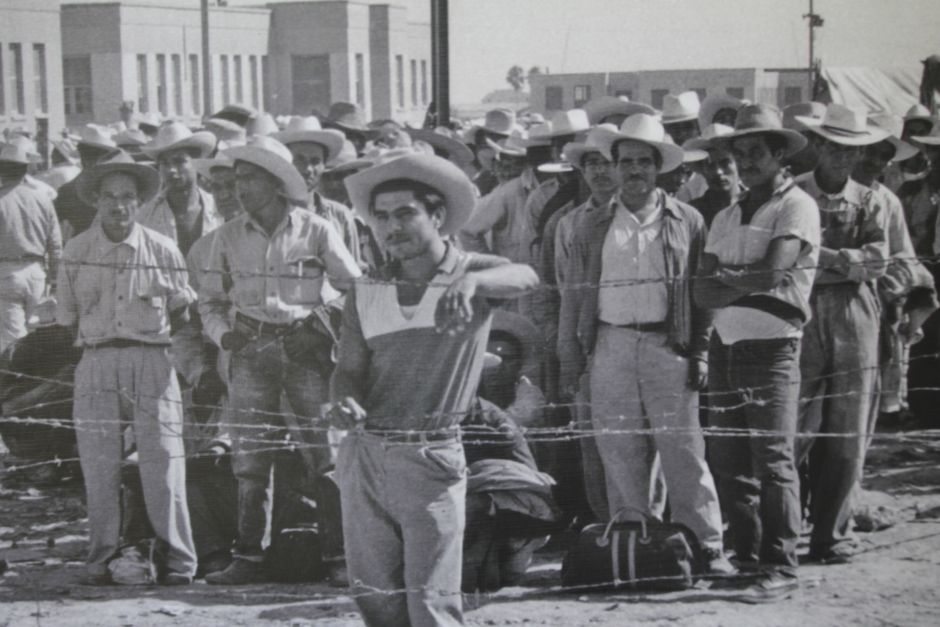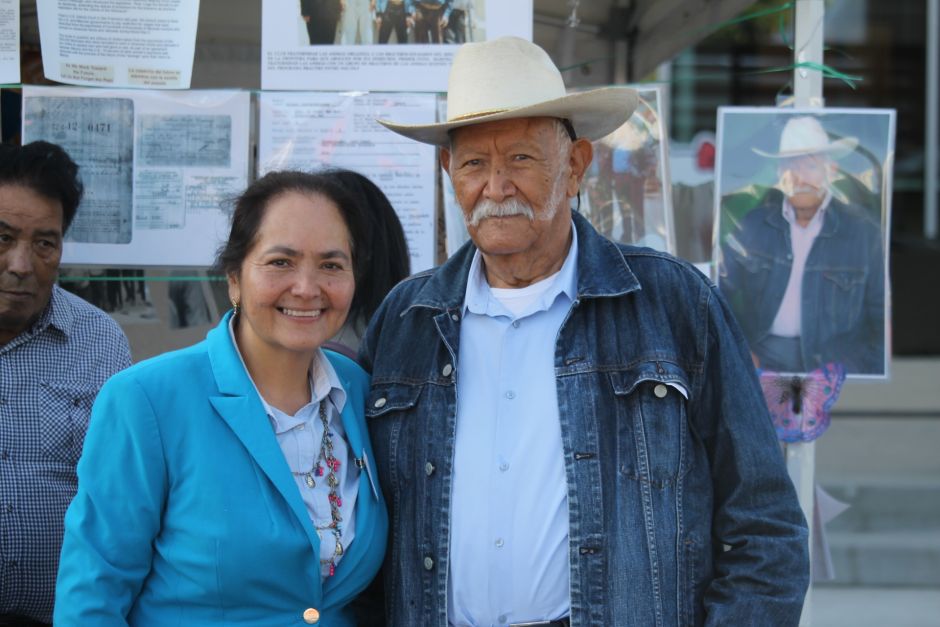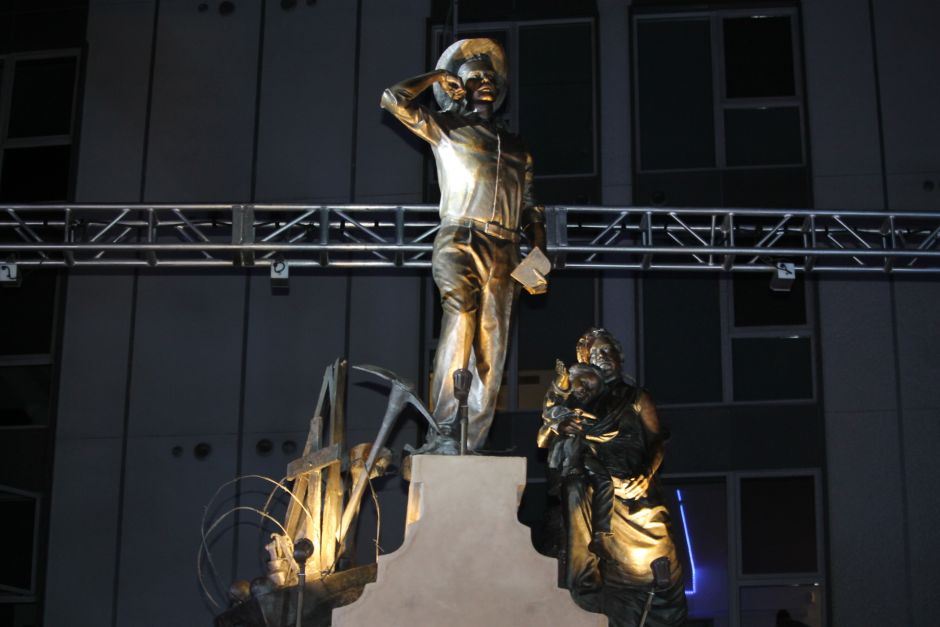Mexican agricultural workers who came to work in the United States from 1942 to 1964 are immortalized next to the Olvera Placita
Dozens of Mexicans, widows, wives, children and grandchildren lived a historic night by witnessing the unveiling of a statue that honors the memory of the heroes who furrowed the farm fields, mines and helped build the railways of states United when this country needed it most, since its soldiers were fighting during World War II.
Thrilled to tears, the "old men" looked forward to the sculptor Dan Medina, the councilor José Huizar, his uncle Gilberto, who was a bracero, and Baldomero Capiz, leader of the peasants at the same time press the button that ran the curtains that covered the work of art,
"After we unveiled the statue (of the late rancher singer) Antonio Aguilar, more than seven years ago the idea of recognizing the braceros also arose," Councilman Huizar told La Opinion. "The most difficult thing was to get the funds, and then, a place to a block of the Olvera Placita."

For the realization of the project, the state granted 3 million dollars to compose the streets around the area where the statue is located – between Main Street and Cesar Chavez Avenue.
Another $ 200,000 was donated by the Crunnell Crow housing development company to shape the square.
The 19-foot-tall bronze statue portrays a Mexican migrant and his family. It is on a pedestal in the Olvera square, where the city of Los Angeles was founded.
"The story of the braceros has not been told in the books," said Huizar, whose father, Don Simón Huizar Bañuelos, who died in 1990 was one of those men who cultivated the land from Stockton to the Imperial Valley, in Texas and Arizona , in the pisca of the strawberry, cotton and apples. "With this recognition we want to tell the United States to remember the story."

Under the Bracero Program, from 1942 to 1964, 4.6 million labor contracts were signed and a series of bilateral agreements between Mexico and the United States emerged that allowed millions of Mexican men to come to work, mainly in the agricultural fields.
The braceros also helped in the construction of the railway tracks during World War II (1941-1945), while American soldiers were in combat.
“It was time to thank the braceros for what they did for this country; they suffered difficult lives; the butlers mistreated them, did not pay them well and exploited them, ”said the Angelino official. “They worked tirelessly and didn't give them water; they put them to sleep in barracks and lived like animals. ”
In the contracts signed by the braceros, a clause established that they would reduce them by 10% of their salaries, with the promise that that money would be reimbursed through the disappeared National Rural Bank (Banrural). The money "disappeared" from the hands of the Mexican government.

“I came to work about five times, but you didn't do accounts,” recalled Rigoberto Jiménez, 83, a man born in Las Animas, in Nochistlán, Zacatecas. "Luckily, I got 3,500 dollars back, something small, but it's better than nothing."
His daughter, Martha Ofelia Jiménez, a community activist in East Los Angeles praised her father's figure: “My dad is my greatest exemplary model and inspiration in my life and since I have reason I have been a“ warrior of the "tireless" light. He gave me my first lessons forever: advocate for social justice in different areas and see everyone with their hearts. He is my rail and field soldier. ”
Also, Cleotilde Razo Santoyo and her husband Jorge, from Morelia, Michoacán, said that since the official verdict of the class action lawsuit against the Mexican government that took place in 2011, they have not received any bonus.

“I claimed the rights of my father, José Santoyo, but they made us go around and never gave us a penny,” said Cleotilde.
It is the same situation of Juan Avila, 85 years old, who was born in Fresnillo, Zacatecas, and Gregorio Ibarra, 83, a resident of San Pedro who said: “They only become monthly and do not pay what they stole from us "








